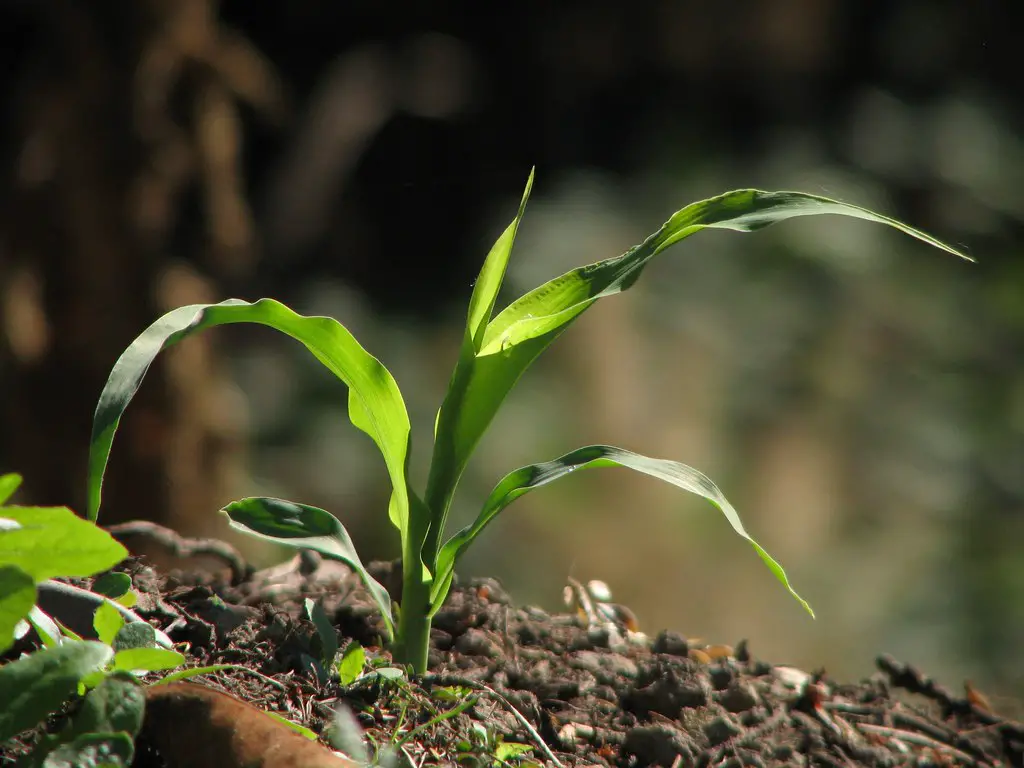The Corn Plant, also known as Dracaena fragrans, is a popular houseplant renowned for its ease of care, adaptability, and attractive appearance. Often mistaken for a palm, its thick, woody stalks bear glossy green leaves that resemble the foliage of a corn stalk. Originating from tropical Africa, the Corn Plant has become a household favorite across the globe.
The Corn Plant is cherished not just for its ornamental appeal but also for its ability to purify indoor air. It is capable of removing several toxins, including formaldehyde, from the air, thus contributing to a healthier living environment. Additionally, the Corn Plant is tolerant of many indoor conditions, which makes it an ideal choice for offices and homes alike.
From the wild jungles of Africa to modern living spaces, the Corn Plant has journeyed far, winning hearts with its grace and resilience. It’s a low-maintenance plant that even novice gardeners can successfully grow, adding a touch of the tropics to interior spaces.
| Attribute | Details |
|---|---|
| Common Names | Corn Plant, Cornstalk Dracaena |
| Botanical Name | Dracaena fragrans |
| Family | Asparagaceae |
| Plant Type | Evergreen shrub |
| Mature Size | 4-6 feet indoors; up to 50 feet outdoors |
| Sun Exposure | Indirect, moderate light |
| Soil Type | Well-drained, loamy soil |
| Hardiness Zones | 10-12 |
| Native Area | Tropical Africa |
Corn Plant Care
Caring for the Corn Plant is a relatively simple affair. It is adaptable and can thrive in a wide range of indoor conditions. However, like all living things, it has its preferences. It loves indirect sunlight and well-drained soil and benefits from regular but not excessive watering.
Though it’s forgiving of neglect, the Corn Plant rewards attentive care with robust growth and can occasionally produce fragrant white flowers when it reaches maturity. Regular cleaning of the leaves to remove dust and occasional feeding with a balanced fertilizer will keep it looking its best.
Light Requirement for Corn Plant
The Corn Plant prefers bright but indirect sunlight. Too much direct sunlight can cause the leaves to scorch, while too little light may lead to weak growth and loss of color. A north or east-facing window is typically an ideal spot.
Soil Requirements for Corn Plant
Well-drained, loamy soil with a pH range of 6-7 is best suited for Corn Plants. Soil that retains some moisture without becoming soggy is ideal, as overwatering can lead to root rot.
Water Requirements for Corn Plant
Water the Corn Plant thoroughly and then allow the top inch of soil to dry before watering again. Reduce watering during the winter months when the plant’s growth slows down. Overwatering can cause yellowing leaves and other problems.
Temperature and Humidity
Corn Plants prefer temperatures between 60-75°F (15-24°C). They can tolerate lower temperatures but not freezing. Humidity levels should be kept moderate. Too dry air may lead to brown leaf tips, while overly humid conditions can encourage mold growth.
Fertilizer
Feed the Corn Plant with a balanced, water-soluble fertilizer every 4-6 weeks during the growing season. Follow the instructions on the fertilizer package, and avoid over-fertilizing, as this can lead to salt build-up in the soil.
Pruning Corn Plant
Pruning helps maintain the shape and size of the Corn Plant. Cut back any unwanted stems or leaves with clean, sharp shears. If the plant becomes too tall, it can be cut back, and new growth will usually emerge from the cut area.
Propagating Corn Plant
Propagating the Corn Plant can be done through stem cuttings. Cut a stem section with at least one node and plant it in fresh potting soil. Keep the soil moist, and the cutting should root within a few weeks.
How To Grow Corn Plant From Seed
Growing Corn Plant from seed is rarely done, as it is a slow process. However, seeds can be sown in a well-draining soil mix and kept warm and moist until germination. Transplant the seedlings when they are large enough to handle.
Common Pests & Plant Diseases
Spider Mites
Spider mites can be treated with insecticidal soap or neem oil.
Scale Insects
Scale insects can be removed by hand or treated with insecticides.
Common Problems With Corn Plant
Brown Tips
Brown tips on leaves may be caused by low humidity or over-fertilizing.
Yellowing Leaves
Yellowing leaves can indicate overwatering or poor drainage.
Pro Tips
- Wipe the leaves with a damp cloth occasionally to remove dust.
- Avoid placing the Corn Plant near drafts or heat sources.
- Repot the plant every few years or when roots become visible at the soil surface.
- Maintain a consistent watering routine for optimal growth.
- Use filtered or dechlorinated water if your tap water is high in chlorine or fluorides.




